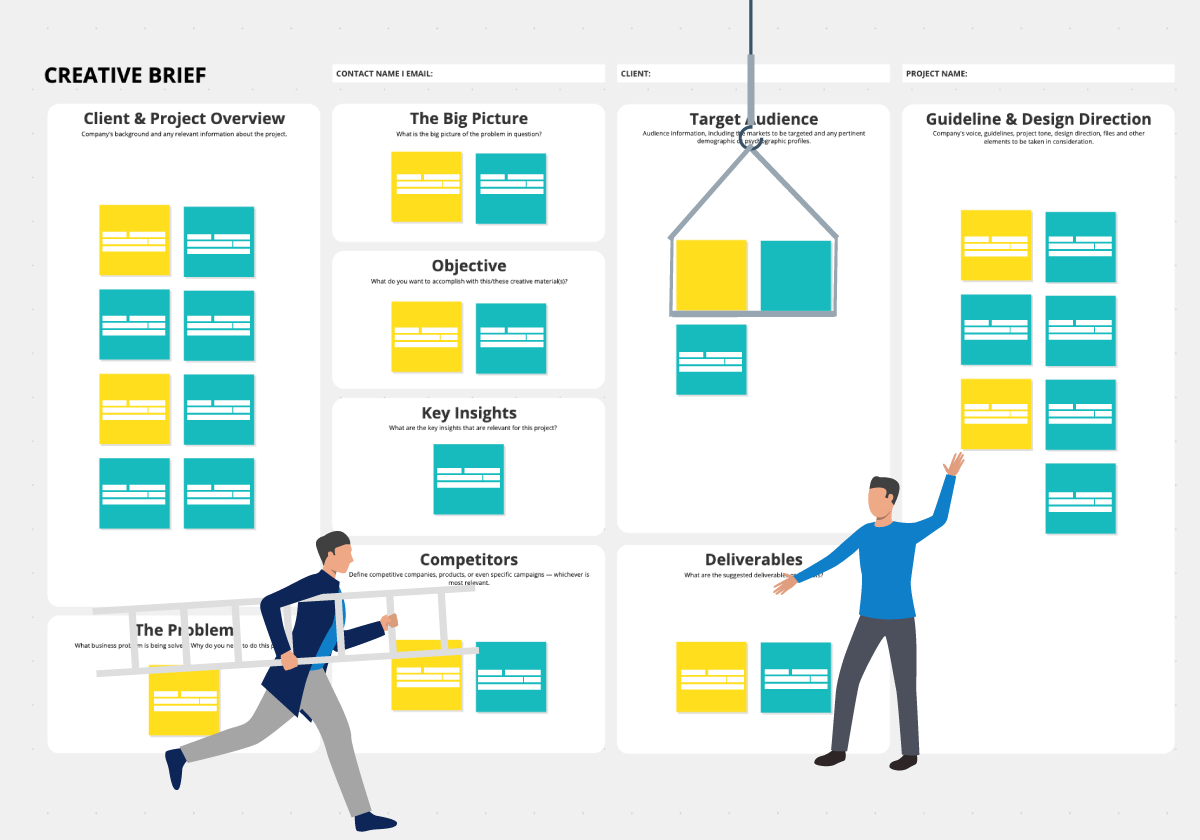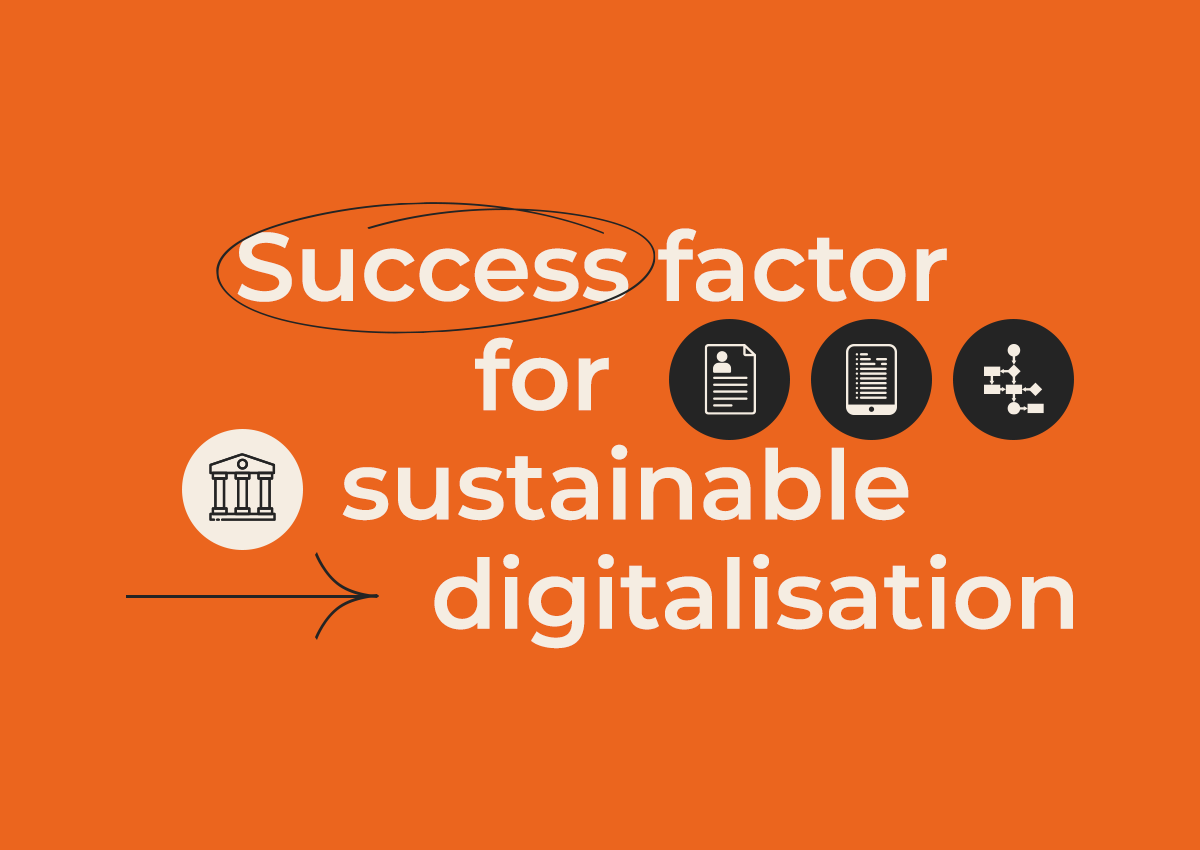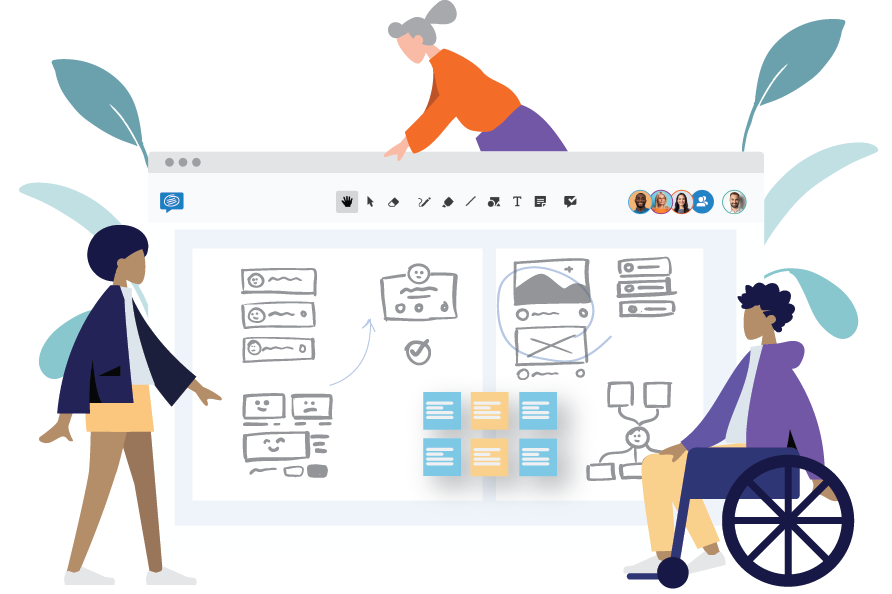What is a Creative brief
A creative brief is the greatest tool in a marketer’s arsenal to ensure creative agencies deliver their best possible work. Writing a creative brief that is clear, concise and comprehensive is the first step in ensuring alignment on project deliverables. Use our collaborative creative brief template to inspire your agency today. Bring your ideas to life Conceptboard’s collaborative online whiteboard.
Be it the design of a logo, packaging design or the creation of a brand campaign, a well-written creative brief informs, educates and inspires your agency to think outside the box and deliver impactful results. This article breaks down the various elements that go into writing a compelling creative brief and encapsulates these into an easy to use template. Click on below template to create a visual, compelling brief.

How to use the creative brief template
Our creative brief template can be used collaboratively with the rest of the team. Once it is complete you can export is as a PDF. Or just click on the share button to invite your agency into a board! These are the sections of a creative brief template.
Client and project overview
An overview of your brand and the project sets the tone for the creative brief. The idea is for the creative/designer to have a better understanding of your business, who you are and how you see yourself. It’s an opportunity to talk about the various products and services you offer as well as to reinforce the organization/brand identity. A project overview also provides a high level view of the project in question in a few, short sentences.
For example, a project overview for a new campaign for Facebook’s new corporate logo could be as follows: “ We need to design a new logo that differentiates the organization from the social network, encapsulates our corporate values and represents who we are and where we are heading.’

The power of visual collaboration
Problem statement
The problem statement is an expression of the status quo and identifies the reasons and motivations behind the project. Are you losing shares to your competitors? Is a specific category growing slower than the rest of the market? Is your product design not edgy enough? A problem statement helps the agency understand what situation you are trying to rectify and approach the problem from an empathetic standpoint. Struggling with defining a problem? Use our comprehensive problem statement template or the A3 problem solving technique.
The big picture
No project exists in a vacuum. Every campaign, every product redesign is a step towards a larger strategic goal. How does your project fit into the brand’s larger strategy? How would this project impact the brand’s future? The big picture view is a great way for agencies to understand their role in the larger scheme of things. An insight into the long term impact and expectations of the campaign pushes agencies to look beyond project specifics and adopt a long term view.
Objective
This section answers perhaps the most critical question of all. How do you measure project success? What are the metrics that you are chasing? These can be both qualitative and quantitative. For example, larger CTR for an ad campaign, a 15% lift in brand awareness for a or brand logo or a higher ‘dwell time’ on a website. A clearly defined objective ensures accurate measurement of project ROI as well as help creatives stay rooted to concrete KPIs.
Key Insights
If the problem statement, project objective and the big picture view is the data-led foundation of the project, insights are sparks that ignite the creative process. As an example, the popular “live in Levi’s” campaign was conceived from an insight that emerged from an in-home visit by SEO Chip Bergh. The “Aha moment’ was when this customer said “You wear other jeans, but you live in a Levi’s”. Insights can be derived through the use of qualitative research methodologies such as focus groups, in-depth interviews or surveys.
Competition
Almost all creative projects are conceived with the end goal of increasing market share and generating additional revenues. For competitive industries, this growth in revenue can only come at the cost of competitor market share. It is therefore imperative that agencies understand the competitive landscape in order to deliver results that are innovative, unique and differentiated from competition. This list should include both direct and indirect competitors.
Target Audience
Now that we’ve added the why of the campaign, it’s time to get to the all important ‘Who’! The target audience lies at the heart of the campaign. Only once you know who you’re building for can you come up with impactful content. One can get a deeper understanding of the target audience with the help of frameworks such as the ‘customer empathy map’. This section should outline not just demographic data but also psychographic information such as needs, wants and motivators. Creation of the ideal user profile with the help of a tool such as the ‘customer persona’ can be really helpful for agencies.
Deliverables
This section outlines the tangible output of the project. This is usually a list of clearly laid out deliverables such as ‘3 videos of lengths 15secs, 30secs and 45secs’. Ideally this should also include additional details such as format, media and other details.
Guideline and design direction
Now is when we come to the inspiration part of the creative brief. This section is all about walking a fine line between creating guidelines while at the same time not restricting the creative process. Be sure to include information that catalyzes the ‘aha moment’ and helps creatives make the leap from the mundane to the extraordinary. This section should also include information such as brand tone, voice, colour schemes etc. to maintain consistency of image.
Challenges with a creative brief
The biggest challenge with writing an effective creative brief is encapsulating all the information into one concise document. It is important not to overwhelm agencies with extraneous information that might not be relevant to the project. This is where a creative brief template comes in handy. It acts as a natural delimiter and forces you to compress and summarize.
The best creative briefs are also the most succinct. Another way of effective agency communication is through the use of visual collaboration tools such as Conceptboard. Most creatives are visual thinkers and sometimes the only way to speak their language is to collaborate visually. Discover the power of visual collaboration today!




